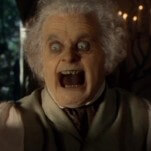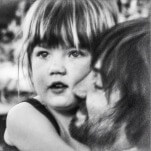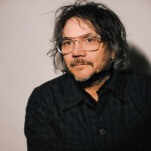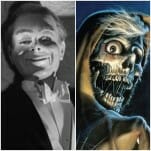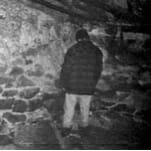Many Mansions: On TV’s Big Houses and the Death of the American Dream
Photo: Netflix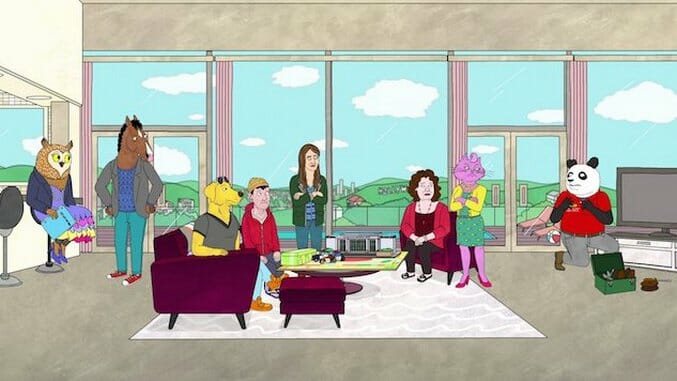
The first frame of the opening credits of BoJack Horseman says a lot about the kind of story it’s going to tell. The credits open on a large, rectangular house with floor to ceiling windows and a balcony hanging over the edge of a cliff. The home’s plain facade gives the impression the owner is cold and hard, and the sharp corners of the building indicate that nothing soft and fuzzy is happening inside. The home is distant from the rest of the population, providing a feeling of loneliness and isolation. All of the information told through this house matches the attitude of the perennially depressed and destructive inhabitant, BoJack Horseman (voiced by Will Arnett).
The production design of houses on TV has become a large part of telling stories of misery. It’s the opposite of a kitchen in a Nancy Meyers movie—instead of a beautiful home revealing a full heart, it reveals emptiness. Big houses on TV have become visual shorthand for the sadness of those who live within.
Owning a beautiful house used to be emblematic of the American Dream. But after the housing crash when many people couldn’t pay their mortgages, the homes people worked to buy stood empty and became decrepit. Because bankers and investors who made money during the recession did so by selling (or repackaging and then selling) faulty mortgages to people who couldn’t afford them, big houses became representative of everything that caused the crisis in the first place: greed, corruption, evil. Rising income inequality and corrupt politicians have only added to the perception that people with a lot of money can’t be trusted. This idea is not new in American culture, but it takes on greater relevance when art is processing the effects of the recession. (Not to mention that the current president is a man who was involved in luxury real estate, and who has showed off his gilded, expensive New York home.) On TV, as a result, big, beautiful homes now represent corruption and misery, rather than success and happiness.
BoJack’s home is particularly emblematic of this, and the opening credits show why. As BoJack floats through his large, open-concept home full of cold, shiny metal and glass, it feels empty instead of airy, matching his depression. No matter what he fills his home with, it will never be enough to make his life fulfilling. (The only character on BoJack to defy the bigger home equals misery rule is Paul F. Tompkins’ Mr. Peanutbutter, whose defining characteristic is that he can be happy no matter where he is. That he can manage happiness in an even bigger house than BoJack’s underscores his positivity and makes him a great foil to BoJack’s depression. He’s the exception that proves the rule.)
BoJack understands this trope enough to subvert it to great effect early in its new season. When BoJack can’t take his sadness anymore, he often leaves his home, unable to handle the beauty he knows he should appreciate but can’t. After Sarah Lynn (Kristen Schaal) dies at the end of Season Three, BoJack leaves his giant house and disappears. In Season Four, BoJack eventually heads to a smaller house than his home in L.A.—to a cabin made of wood instead of glass and steel. The cabin is in terrible condition, so he spends time fixing it up. By the time he is done, the house is warm and cozy, giving the impression that the person who inhabits it is as good-hearted as the décor. The production design of the fixed-up cabin sets the audience up to expect BoJack to feel better, and to heal himself by healing this smaller, more manageable home.
-

-

-

-

-

-

-

-

-

-

-

-

-

-

-

-

-

-

-

-

-

-

-

-

-

-

-

-

-

-

-

-

-

-

-

-

-

-

-

-

